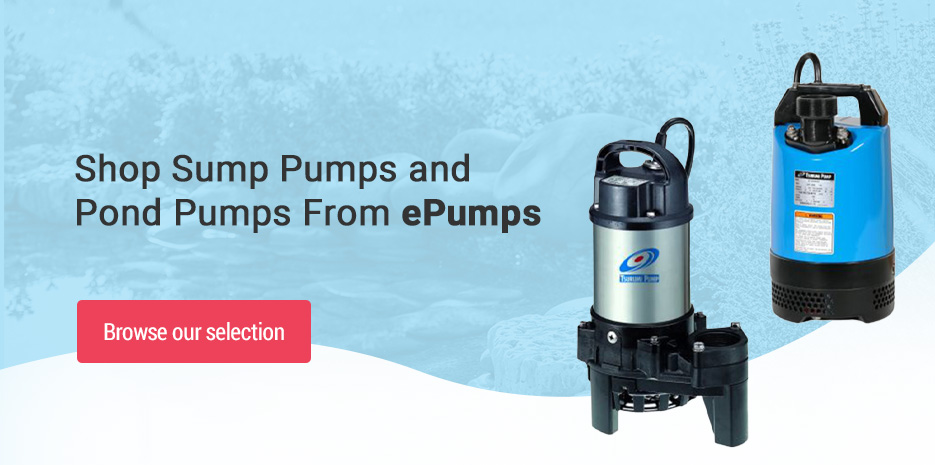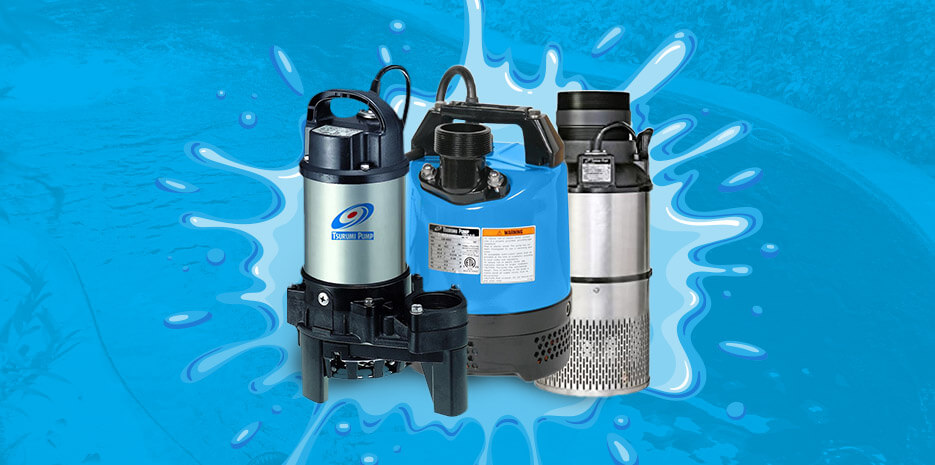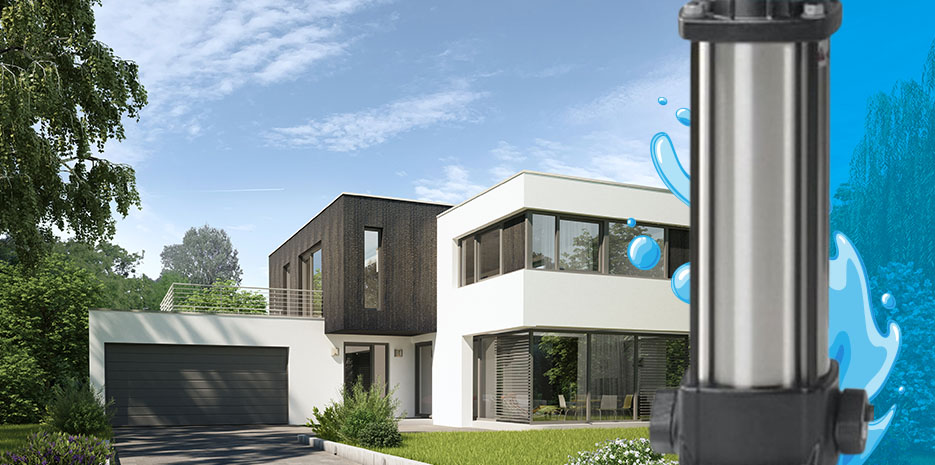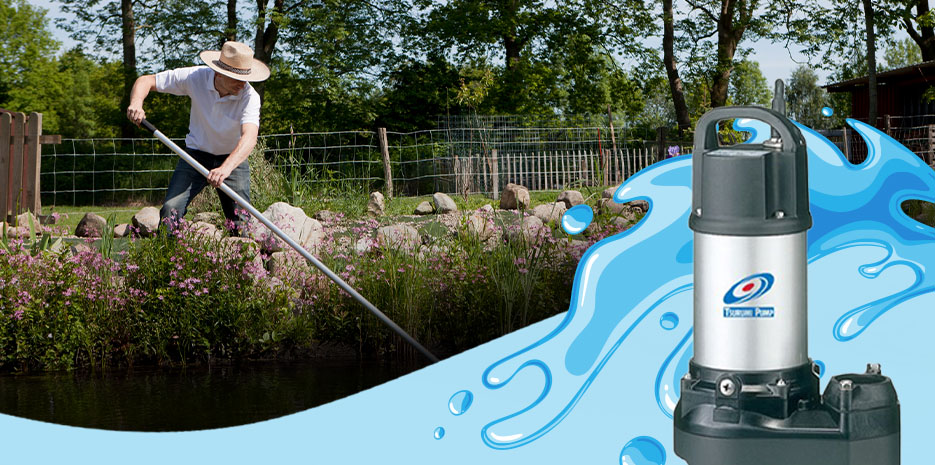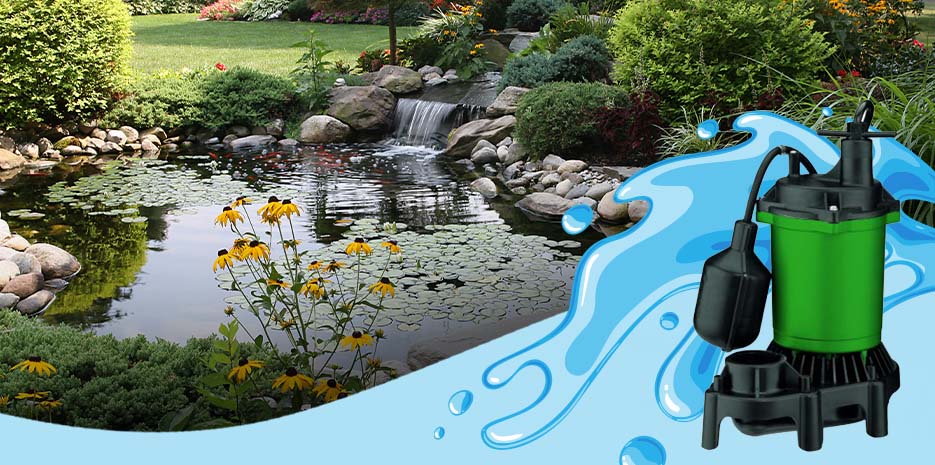Sump Pumps vs. Pond Pumps: What's The Difference?
- By Eli Weinstock
- Mar 14, 2024
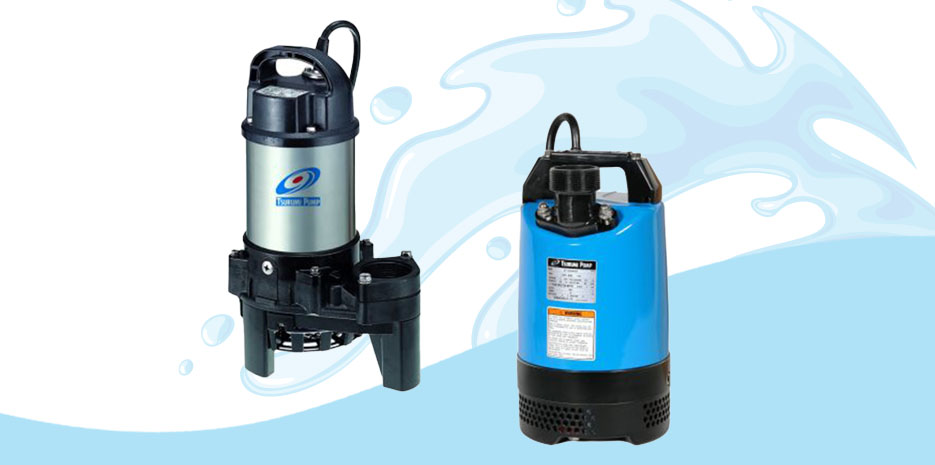
Sump pumps and pond pumps are two pump types you'll see when searching for submersible pumps. These pumps offer distinct capabilities. Understanding the differences between sump pumps and pond pumps will help you choose the best option for your needs, allowing you to get the best performance out of your investment.
What Is a Sump Pump?
Sump pumps go in basements or crawl spaces to help mitigate flooding. When water floods inside these areas, the sump pump begins pumping it out, keeping the space dry. They're usually installed in a sump pit below ground level, encouraging water to flow toward them. Once they start pumping water, the water travels outside the building to a designated draining area.
How Do Sump Pumps Work?
Sump pumps work using sensors, pipes and impellers. After water enters the sump pit, the sump pump's sensor or float switch activates, turning the pump on. Then, an impeller propels the water through the pump, down the pipe and out of the building. Sump pumps can also have water-powered systems or backup batteries to ensure they work through power outages. With sump pumps automatically pumping water out, building owners can avoid water buildup and damage.
Sump Pump Applications
Sump pumps are excellent tools for keeping a space dry and safe. They work effectively for both residential and commercial buildings that often deal with water seepage or flooding. If you live in a home or own a building somewhere that has poor drainage, high water tables or heavy rainfall, sump pumps might be a great solution. Additionally, sump pumps can manage groundwater at construction sites or control wastewater for industrial operations.
What Is a Pond Pump?
Pond pumps help aerate and circulate water in ponds, water features and gardens. They're essential for preventing stagnant water, encouraging oxygenation and maintaining water quality. Pond pumps are constantly moving water around, helping to keep algae from forming and creating a good environment for pond organisms to thrive in.
How Do Pond Pumps Work?
Pond pumps also use an impeller to propel water through pipes. Water is drawn into the pump, where the impeller moves it through the pipe or hose system. This operation creates circulating, flowing water.
You can also find pond pumps with ultraviolet clarifiers or built-in filters to help keep debris and harmful microorganisms out of the water.
Pond Pump Applications
Pond pumps have lots of applications — they can aerate, circulate and even filter water, making them extremely versatile tools. They agitate the water as they push it back into the water system, helping to keep the water clear and healthy for the fish and plants in the ecosystem. For a cleaner, serene outdoor space, you can use pond pumps in ponds, fountains and waterfalls.
Sump Pump vs. Pond Pump Differences
While sump pumps and pond pumps both transport water from one place to another, they have completely different uses, installations and features. Let's break down their key differences, so you know which one is right for you:
- Use: Sump pumps prevent flooding by sucking in water and pumping it out of a space. Pond pumps circulate water through ponds and other water features to improve water quality.
- Installation: Sump pumps usually go in a sump pit beneath ground level in a basement. Pond pumps are installed directly into ponds, gardens or fountains.
- Features: Sump pumps often have backup systems to help them work through power outages. Pond pump features are usually filtration systems that help keep the water clean and free from microorganisms and debris.
- Operation: Sump pumps start working when water trips their sensors. They'll then start pumping water out of the space. Pond pumps continually circulate water to prevent stagnant water and keep water moving through water features.
Pond Pump vs. Sump Pump Maintenance
Whether you have a pond pump or a sump pump, you'll need to maintain them properly to keep them in good shape. Maintenance helps prevent damage, ensuring pump efficiency and preventing expensive repairs. As a result, you can get the most out of your investment.
Pond Pump Maintenance
Here are pond pump maintenance tasks you'll need to perform regularly:
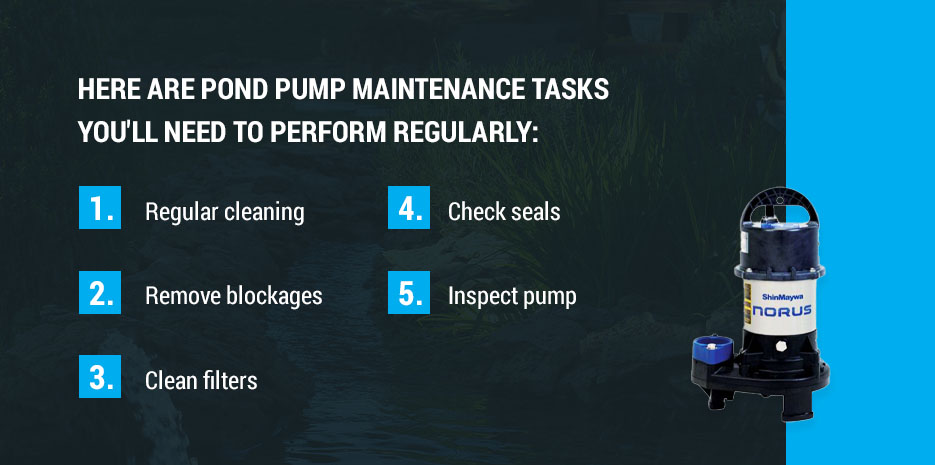
- Regular cleaning: Pond pumps sit outside in water all day, sometimes getting clogged with algae, debris and twigs. You need to regularly clean your pump's intake and impeller to prevent buildup and clogs from harming the pump's efficiency.
- Remove blockages: Look at the intake screen and tubing to remove any clogs from the pump. You can use brushes, nets and even your hands to clear out any debris you see. Be sure to wear gloves if you use your hands.
- Clean filters: If your pond pump has a filtration system, you'll need to clean that out so it can work effectively. Follow the manufacturer's instructions to prevent filter damage and get a good clean.
- Check seals: You also need to inspect your pond pump's seals and gaskets for leaks and damage. If you spot any problem areas, you should replace them to ensure there's a waterproof seal.
- Inspect pump: Make sure to inspect your pump's overall performance, too. If you notice any problems or changes, you'll need to fix them quickly to prevent further damage. Check the water levels and flow rate to ensure everything is correct.
Sump Pump Maintenance
Here are the key sump pump maintenance tasks you'll need to do regularly:
- Clean sump pit: You need to clear out buildup, debris, sediment and mud from your sump pit. Flooding water often brings in debris from the outside. Any buildup in your sump pit can prevent effective drainage, letting water back into your building.
- Test and inspect: Regularly test and inspect the sump pump's float switch and check valve. These components are essential for proper sump pump function. For the float switch, you just need to pour water into the sump pit to see if it automatically activates. For the check valve, make sure it opens and closes smoothly so you have no water backflow.
- Check backup power: You also need to test your backup power system to ensure you have sump pump function during power outages. Test your backup power source regularly so you can catch issues early before an outage happens.
- Get professional inspections: Consider scheduling yearly professional maintenance for your sump pump. A professional can inspect and service your sump pump, getting it to work optimally and protecting your entire system.
Shop Sump Pumps and Pond Pumps From ePumps
ePumps offers high-quality and effective submersible pumps to help you meet all your pump needs. With a wide range of pump options, you can get sump pumps, pond pumps and more from us whenever you need a quality product.
With 24/7 customer service, competitive pricing, hassle-free returns and free shipping, ePumps makes shopping for pumps easy. Check out our industry-leading pump options today!

